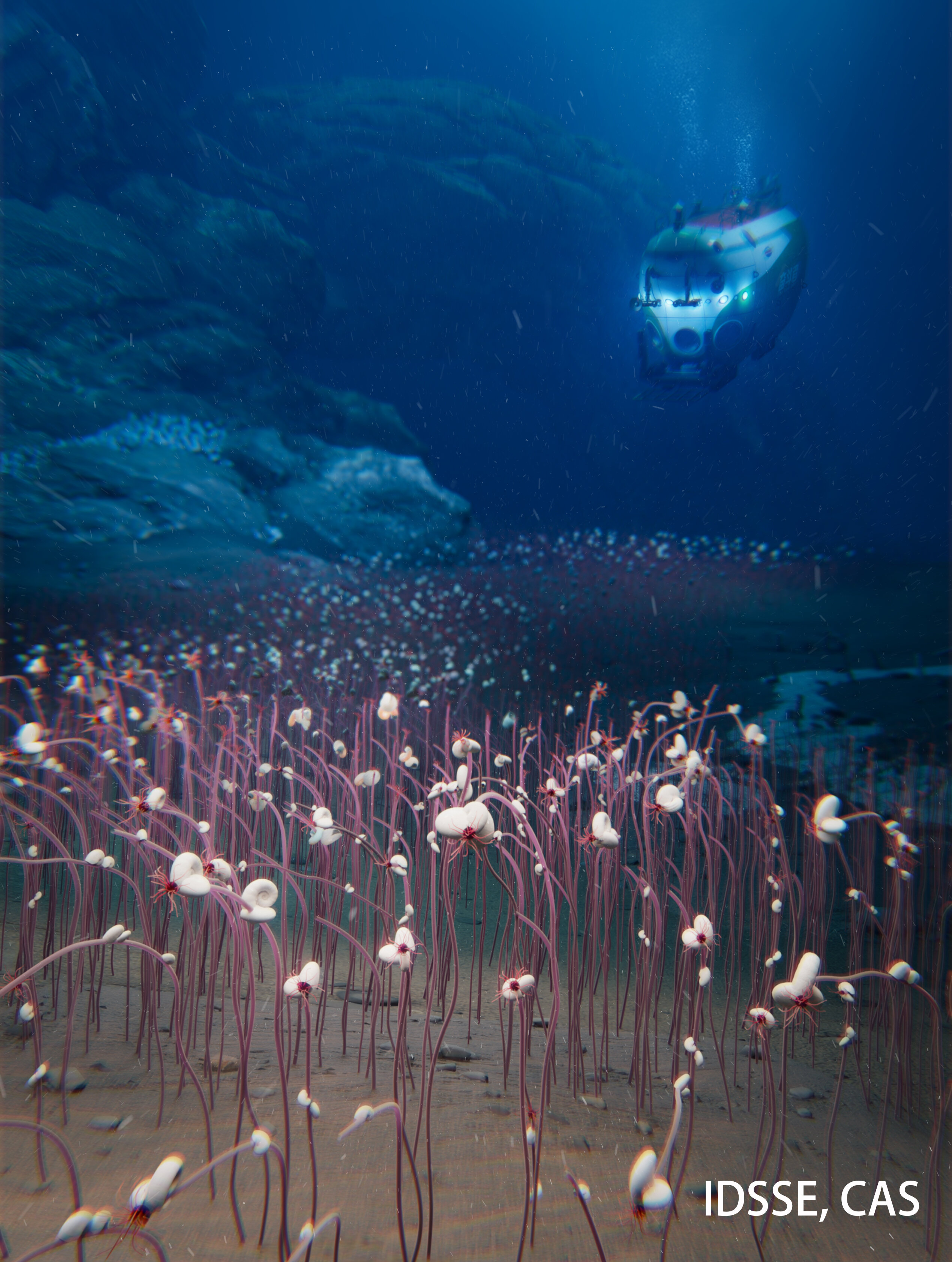Follow us on Google News (click on ☆)
The team of scientists conducted 23 dives with the 'Fendouzhe' submersible, revealing colonies of marine worms and mollusks at record depths. These creatures flourish in a lightless environment, thanks to a process called chemosynthesis, metabolizing chemicals such as methane or its byproducts.

Hadal dive with the manned submersible Fendouzhe. This illustration depicts these remarkable ecosystems, forming a 'river' of chemosynthetic communities at the bottom of the hadal trench.
Credit: Institute of Deep-sea Science and Engineering, CAS (IDSSE, CAS)
The observations include tubeworms reaching up to 12 inches (30 cm) and clusters of bivalves, forming ecosystems. These findings suggest a richer biodiversity than previously expected in hadal zones, the deepest parts of the oceans. The presence of methane produced by microbes has also been confirmed, attracting colonies of worms around microbial mats.
These results, published in Nature, challenge our understanding of the limits of life and deep-sea ecosystems.
Hadal chemosynthesis-based communities.
Credit: Institute of Deep-sea Science and Engineering, CAS (IDSSE, CAS)
Credit: Institute of Deep-sea Science and Engineering, CAS (IDSSE, CAS)
How does life survive in the abyssal depths?
Life in the abyss relies on chemosynthesis, a process where organisms convert chemical compounds into energy, without the need for sunlight. This adaptation allows survival in extreme environments.
Microbes play a central role by breaking down chemicals to produce energy. These microorganisms form the base of the food chain in these ecosystems.
Tubeworms and other deep-sea creatures depend directly on these microbes. They often live in symbiosis with them, in an interaction between different life forms.
This discovery expands our understanding of life on Earth, showing that it can thrive in conditions previously considered uninhabitable, and also suggests pathways for researching potential extraterrestrial life.
The Mariana Trench, the deepest point in the oceans, is a natural laboratory for studying the limits of life. Ocean trench ecosystems may be more widespread than we thought. This reveals an interconnectedness of deep-sea habitats that remains to be explored.